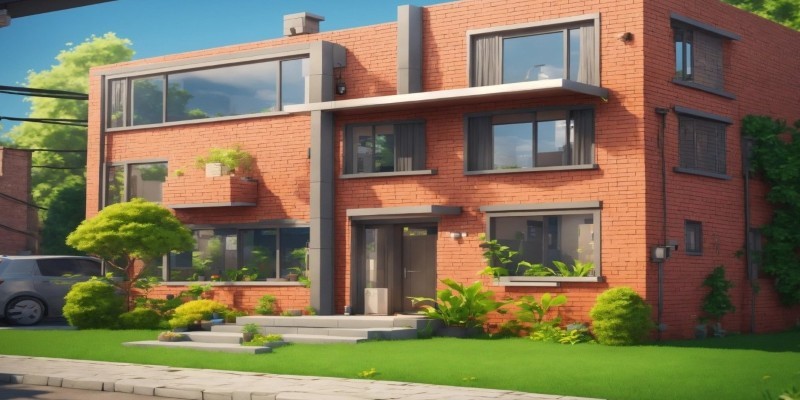Finding affordable housing can feel like searching for a needle in a haystack, especially in cities with high demand and rising rental prices. Many people struggle to find housing that fits their budget and needs, but with the right approach and mindset, hidden gems remain. This article will guide you through practical steps to uncover these affordable housing options, covering a range of methods beyond conventional rental listings.
Most people begin their housing search on large, popular websites like Zillow, Realtor.com, or Apartments.com. While these sites are helpful for general information, they often feature listings with high competition and rental prices. The availability of affordable options on these platforms can be limited, especially in high-demand areas.
However, you can access listings not as heavily marketed by going beyond these mainstream platforms. Consider checking out local classifieds websites like Craigslist or platforms like Facebook Marketplace. These sites often have listings not posted on the more prominent rental platforms and can sometimes be more flexible in price. Many landlords, especially those with smaller properties, prefer to work directly with tenants instead of going through larger agencies or websites, which can drive the cost.
Another option is to look for "by-owner" listings. Property owners may not list their units on significant platforms to avoid paying fees or dealing with property managers. You can negotiate rental prices and secure a better deal by contacting owners directly. Sometimes, even asking for a lower rent price can lead to a discount, especially if the landlord has trouble filling the unit.
Instead of sticking to the most popular areas, consider exploring neighbourhoods in the early stages of development or gentrification. These areas may have lower rental prices now, but they become more desirable as time passes. In 2025, we've seen many neighbourhoods in cities across the country become more affordable as development efforts move inward, away from the traditionally expensive areas.

Start by looking at parts of the city that are slightly removed from the main hubs of activity, as these areas offer better value. As long as public transportation options and essential amenities are nearby, these neighbourhoods can provide affordable living without sacrificing convenience. In some cases, these areas are not yet well-known, and therefore, the housing market is less saturated, which could lead to better rent prices.
In today's digital age, social media can be an unexpected but valuable resource when looking for affordable housing options—many tips and advice from people in the area. Joining local community groups can help you learn about rental opportunities that aren't posted on major websites, and sometimes, you might even get a referral from someone who is moving out.

These online communities can be great for getting recommendations on hidden rental opportunities from locals familiar with the area. Additionally, friends or acquaintances can connect you with landlords directly. Word-of-mouth referrals can lead to lower rents and more flexible lease terms, as landlords often prefer renting to tenants with personal connections or recommendations.
In some cities, housing co-ops and shared housing arrangements are also common, and these can be found through social media groups dedicated to this type of living situation. Living with others can significantly lower housing costs while fostering a sense of community.
Public assistance programs and subsidized housing can be absolute lifesavers for individuals with limited incomes. While these programs are often overlooked, they can provide a pathway to affordable housing that may not be immediately obvious.

One of the most well-known programs is the Housing Choice Voucher program (Section 8), which offers rental assistance to low-income individuals. Though the application process can be competitive, it is still one of the most effective ways to secure an affordable home in the current housing market.
Local affordable housing programs and nonprofit organizations offer qualifying individuals and families below-market housing. Some cities have "affordable housing lotteries" where renters can apply for discounted housing units that are set aside for low- or moderate-income families. These programs may have long waitlists, but if you're persistent, they can lead to far more affordable opportunities than market-priced rentals.
While not always possible, negotiating rent prices or lease terms can help you secure a more affordable housing option. If you find a place you like but a bit above your budget, try negotiating with the landlord or property manager. If the unit is vacant for some time, the landlord may be more willing to lower the price to get someone in. Even in competitive markets, there is often room for negotiation.

Another tactic is to negotiate for a longer lease term. Landlords may offer discounted rent for tenants who commit to staying longer in the property. While this might not be ideal for everyone, it can provide financial relief in exchange for stability.
Also, don't be afraid to ask about special discounts or promotions that might not be advertised upfront. Some landlords offer lower rent in exchange for specific maintenance duties, such as keeping the property clean or making minor repairs. Even if these offers aren't advertised, they may still be available if you ask.
In addition to traditional renting, alternative housing models are becoming more common and offer a more affordable way to secure a home. Co-living, for instance, is an increasingly popular choice for people looking to lower their living costs. Co-living spaces typically involve renting a private bedroom while sharing common areas, such as the kitchen and living room, with other tenants. These spaces often come fully furnished, and utilities are included in the rent, which makes them an attractive option for people seeking affordable housing in expensive areas.

Another model gaining traction is house-sitting. House-sitters agree to look after someone's home, take care of pets, or perform minor upkeep in exchange for free rent. While this option is more suitable for people who are flexible with their living arrangements and schedules, it can be an excellent way to live rent-free or at a significantly reduced cost.
Tiny and mobile homes are also gaining popularity as affordable alternatives to traditional housing. While these options may require an upfront investment, they can offer long-term savings and often be placed in affordable rural or suburban areas.
Finding hidden affordable housing options requires persistence, creativity, and a willingness to look beyond the traditional rental platforms. By expanding your search, leveraging social networks, exploring government programs, and considering alternative housing models, you can uncover affordable homes that aren't immediately obvious. The key is to remain patient, flexible, and open-minded, understanding that while searching for affordable housing may take time, there are always options for those willing to put in the effort.